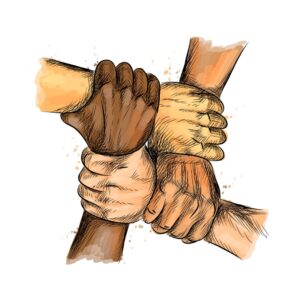Exploitation is Not a Product of Technology

As someone who aspires to work in media I am often engaged in conversations about the current state of the media and its impact on society. Far to often those intelligent discussions dissolve into press bashing. People latch onto the prevalence of media and technology as the impotence for a supposed decline in societal values. It is true that modern media has had quite a transformative impact on society but after recently being introduced to the work of John Berger it became clear to me that exploitation in media is not and will never be an exclusively modern issue.
John Berger’s points on the position of women and femininity in the tradition of the nude within European oil painting were the only part of the Ways of Seeing(1972) series that I agreed with pretty much entirely. Most of the points raised in this portion of the series were things that you thought about and as I understand now they have definitely transformed my opinion of nudity as an artistic concept especially as it is related to what and societal constructs of femininity.
The idea that I was most fascinated with within this conversation was the discussion narcissism. Narcissism itself is something that I have been familiar with since I was very young. I think that the concept was actually introduced to me in a Disney movie that gave a sort of comical depiction of the Greek God Narcissus. However, in all that time I had never thought about the differences in the way narcissism presents itself in men and women. As I was listening to the women describe their own experiences with these different types of narcissism, I realized that they were describing to profoundly different “brands” of the same human emotion or experience. Narcissism as the women in film described it is something that for men seems rooted in a sense a pleasure, self-confidence, and enjoyment. However, for women narcissism seems to be rooted and a constant self-consciousness and anxiety provoked by the voyeuristic nature of our society. I was particularly struck by one of the women’s interpretation of this difference when it comes to the way that women experience their own bodies. First, she described the experience of the moment viewing her own body in private is something inherently positive and pleasurable. Then she compared that to the experience of publicly viewing yourself which is something that almost always brings on self-criticism and self-doubt.
I also was intrigued by how the discussion of these contrasting experiences was linked with the discussion of the difference between being naked and being “a nude.” I never would have made that distinction on my own but I found it to be very interesting because I think it relates to so much of how human beings experience the world. There are so many human experiences that I can recall off the top of my head that are almost entirely intended to be private indulgences, and so when they are made public or can you in nature it transforms and ultimately cheapens the experience. For example, you teenagers (especially girls) experiencing a crush for the first time are often intensely private about the whole thing. At that stage the idea of making your emotions public is often mortifying and for some almost incomprehensible. To me this is because kids who are that young need time to process those emotions, and their societal consequences, in private before they are ready to embrace them publicly. Not having that level of private exploration and processing would probably transform somebody’s entire experience of sexuality as a powerful and positive thing. For example, girls who experienced rape or sexual violence at a young age are probably not given the time that they need to privately process their own positive sexuality. It is either used against them or in some cases entirely stolen from them before they have the chance to fully understand and contextualize it themselves. As a result, many rape victims might have problems forming healthy sexuality in their adulthood. While the consequences of sexual exploitation of nude female subjects in European art were probably not always as severe (although I am sure in many cases they were),
I think that the process of publicizing sexuality is pretty similar when it is applied to the female subjects of European art (and subsequent male voyeurism). “The nude” as Berger and the women in this film conceptualized it, robs the female subject of any sense of private indulgence in her own sexuality. Therefore, that sexuality is ultimately transformed and in this case voyeuristically commercialized. As a consequence of this warping of the experience of sexuality, the women in these paintings are void of all agency and animation when it comes to their own sexuality. They lack the ability and agency to embrace their sexuality as an active experience and they are therefore reduced to objects sexual for men.







